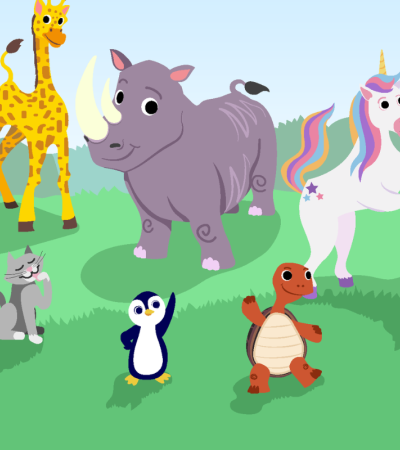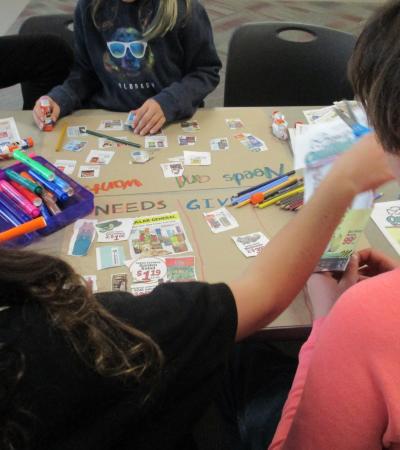Kids become party planners, creating Planning Boards for their clients while staying on budget. With a budget of $100, the players take turns selecting items from a party warehouse managed by the program facilitator. After five turns, players share their plans with the group and explain their choices. The facilitator, or the group as a whole, may opt to select a Party Champion—the participant who plans the most entertaining or creative party while keeping expenses within budget.
Penny Pinchers' Party is part of the Thinking Money for Kids Program Kits, an initiative of the American Library Association (ALA) and the FINRA Investor Education Foundation. Thinking Money for Kids strives to teach children and their parents, caregivers and educators about financial topics — like saving, spending, sharing and budgeting — in a way that is both meaningful and fun.
Advanced Planning
Learning Goals
- Understand what a budget is and how it is useful
- Understand basic business relationships (customer/provider)
- Understand that value can differ from cost (i.e., that fun does not necessarily mean expensive, or vice versa)
Preparation
All game materials needed (including instructions, facilitator's script, play money, Party Cards, and Party Pieces) are available in the Attachments section below. Besides those materials, you will also need a table or flat surface (to hold the items and provide a workspace for the participants), Planning Boards (which can be a sheet of construction paper or cardboard), and a timekeeping device. All materials should be printed off and ready in advance. I also recommend reading the instructions and facilitator's script in advance, and if possible, playing a practice round of the game with volunteers or staff as well.
Marketing
The program was advertised through the library's online calendar, featured in a story block on the library's homepage and posted to social media. Patrons know to check those three locations and help spread the word by sharing the information and tagging other people who might be interested.
Budgeting
Cost would be incurred through printing off the needed materials. Otherwise, there shouldn't be any cost.
Day-of-event Activity
Before participants arrive, set up the game materials on a table or other flat surface. Arrange the Planning Boards with room between them to accommodate individual or team-based play. Place $100 of play money next to each Planning Board. Place the Party Pieces in a central area that all players can see.
One or two staff or volunteers are needed for this game. If available, a second adult can serve as a timekeeper while the facilitator manages the party warehouse and handles transactions.
This program will take approximately 30 minutes, and you can accommodate as many players as you have Planning Boards and Party Pieces. Participants can also work in pairs or teams to accommodate more players as well.
Program Execution
Determine the type of party the participants will plan, either by choosing a Party Card randomly or selecting a card that aligns with your group’s interests.
Taking turns, participants choose an item from the party warehouse to add to their Planning Board. Some items cost money, but others are free. The facilitator displays the items, collects payments, and makes change.
Give each player a time limit (for example, 30 seconds) to choose an item. This will keep the game moving quickly.
After their first turn, participants may use their turn to return a previously purchased item to make room in their budgets for a new purchase, as in exchanging an item at a store.
The game ends after five turns, though it may be extended for additional turns if time allows.
There are also multiple ways in which you can offer variations of this program as well. Kids can color their own Party Pieces before beginning the game, or they can brainstorm their own party themes. You can replace the Party Pieces with items from their imaginations or with actual items collected from around the library. Start the game by assigning a price to each item. Another fun idea is to use the winner's party as the basis for an actual children’s program (for example, plan a craft party for $25 and then host it in real life).
Advice
Make parties relevant: We created our own themes to make them fun and relevant for the kids. We have used the following with much success. We start with the $100 amount and work down to the $25 amount. They love planning parties for events they would actually go to!
- $100 - 8th-grade graduation party
- $50 - Friday Night Football Tailgate party
- $25 - 8-year-old birthday party
Make the whole program party-themed!
- Have fun party music playing as kids arrive and while they are coloring party hats. We used a free printable we found online. Let them wear their hats throughout the program.
- Finish up the program with a fun party-themed edible treat and some quick, easy party games. We have done both a cupcake and a sundae-decorating party to wrap up this program.
Set a real budget with real options and challenge them to create a real library party. This option really got the kids excited and invested in the planning process, and looking at the budget carefully to determine the best use of funds.



